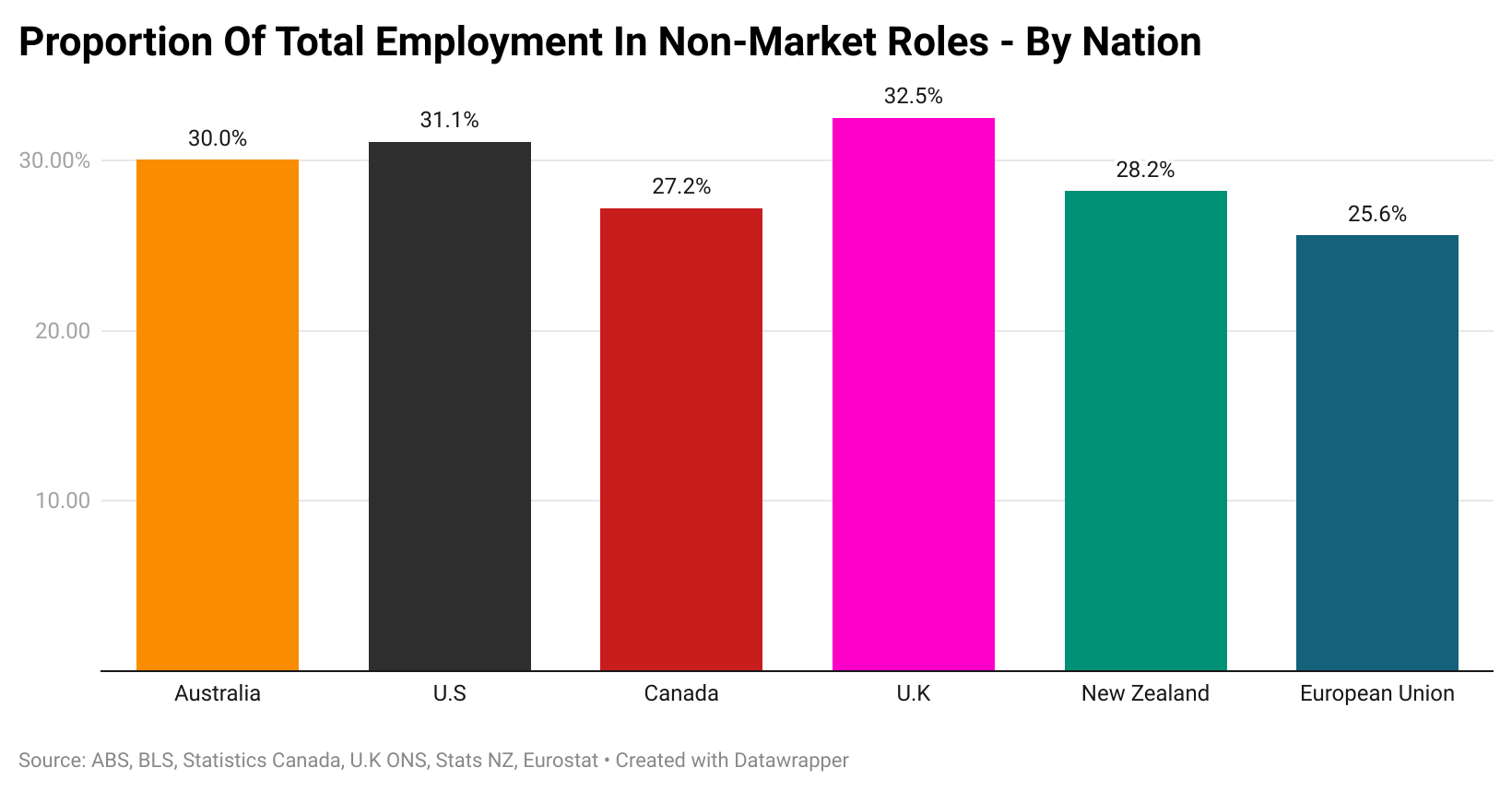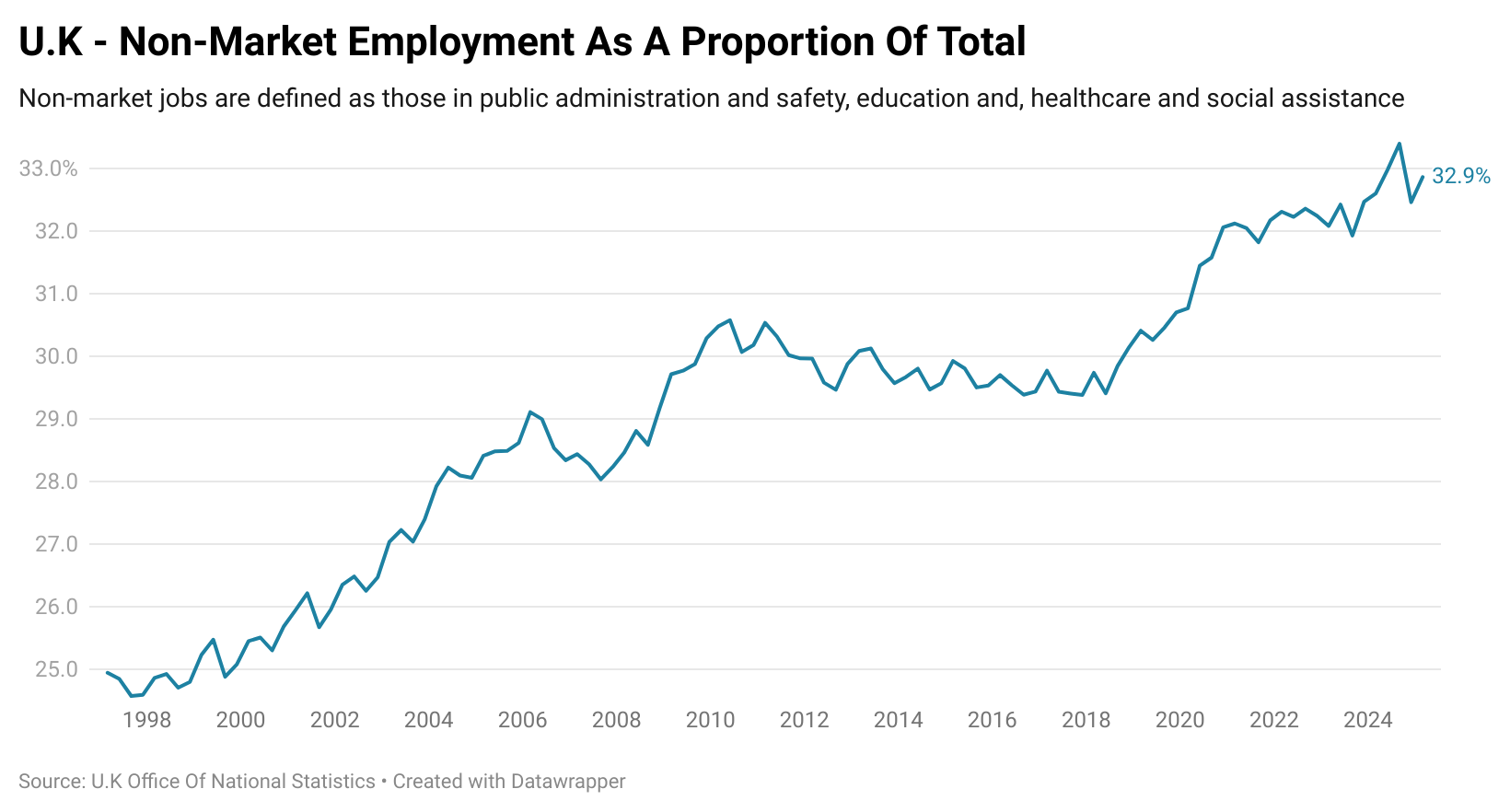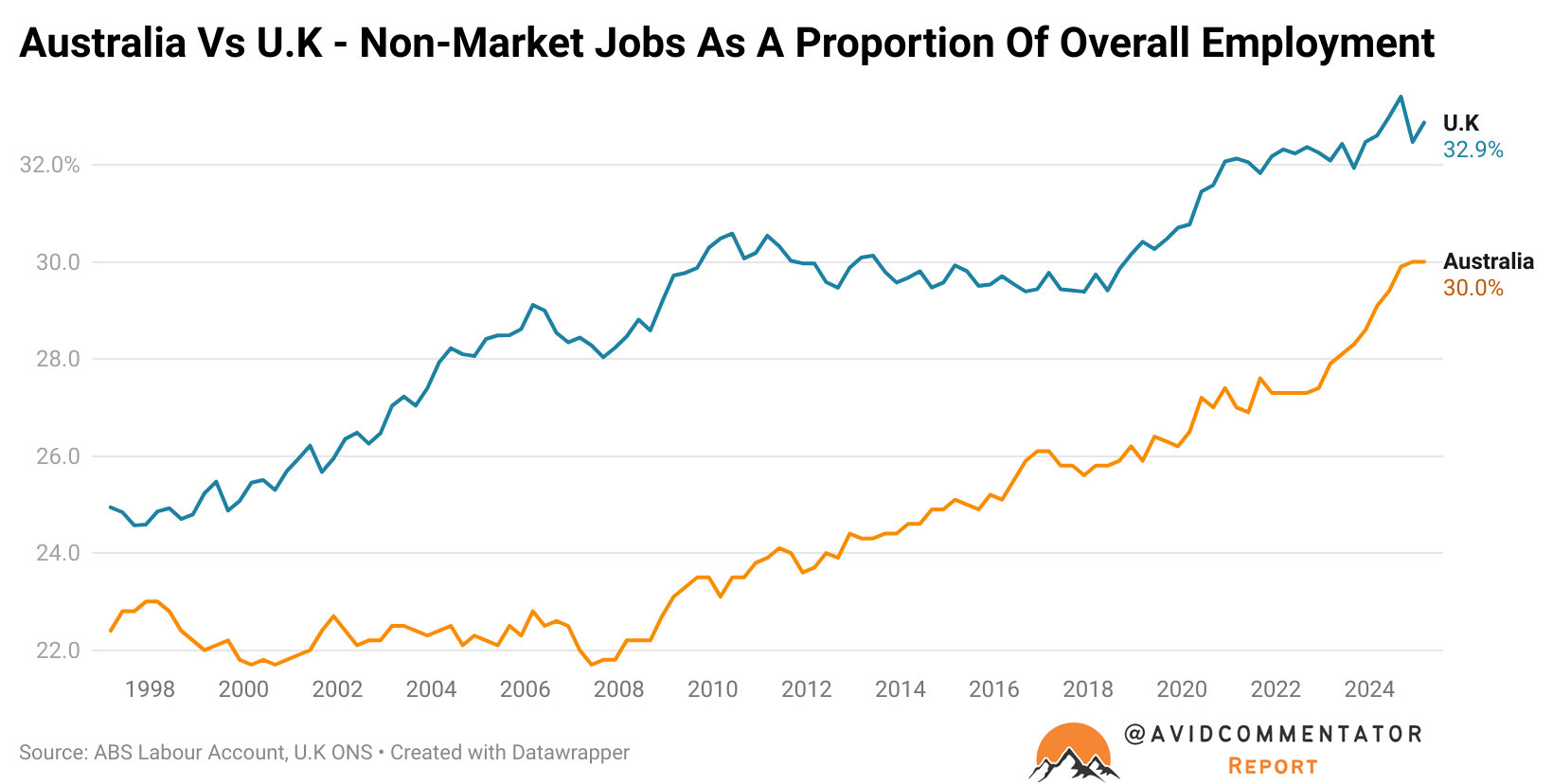In recent years, the hard reality of the economic, social and fiscal situation of Britain have gradually come to the forefront.
Some examples have been surprisingly humorous, such as the livestream of a lettuce that ended up outliving the government of Conservative Prime Minister Liz Truss.
Others have been cold and concrete, such as the numerous announcements of cuts, tax increases, and seemingly never-ending deteriorations in the position of the U.K. budget.
Looking at the path taken since the days of strong growth in living standards and budget surpluses in both nations, one can’t help but be struck by the similarities with Australia.
When assessed against other countries across the Anglosphere, Britain takes the top spot for the largest proportion of people employed by non-market sectors of the economy.
Non-market sectors of the economy are defined as public administration and safety, education, healthcare, and social assistance.

While there has been a recent surge in the proportion of the British labour force employed in non-market sectors of the economy, the shift to relying on generally taxpayer-funded industries to drive employment growth has been a long time coming.

In the years since the GFC, Australia has also seen a meteoric rise in the level of total employment, resulting from non-market employment taking over as the driver of the majority of employment growth. But despite seeing by far the largest rise in the proportion of the workforce employed in non-market sectors of the economy, Australia’s total today is roughly where Britain’s was in 2010.

As the avenues of politically easy solutions continue to be shuttered to the Starmer government, harder choices will need to be made to get Britain back on a sustainable path.
This path is challenging and will almost certainly require highly unpopular and controversial choices to be made, and if the wrong path is pursued, it could be highly damaging for Britain’s social fabric.
Australia has an opportunity to do things differently, to choose a more fiscally and economically sustainable pathway in which the challenging realities of the economy are confronted and addressed, rather than papered over with another round of government-funded employment and economic growth.
Or not.

